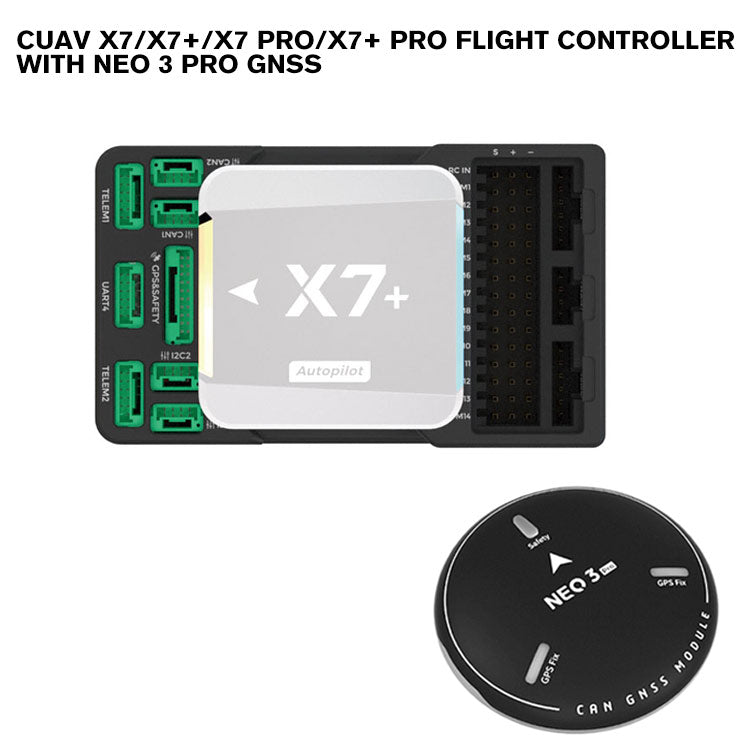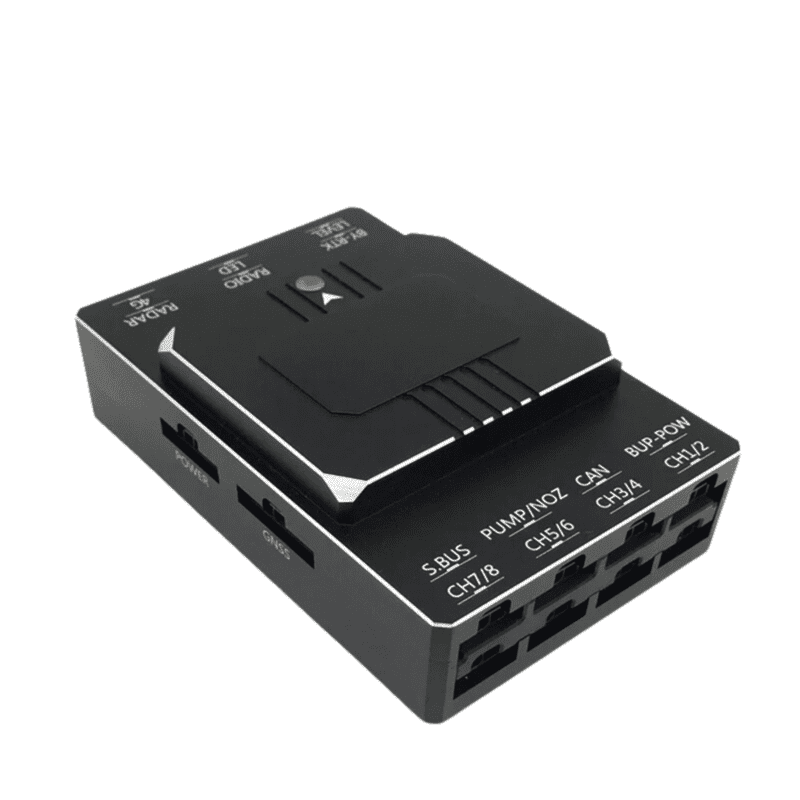The Prospective of UAVs: SparkNavi Drone Flight Controller and GNSS/INS Made in Taiwan
Exploring the Function of Drone Trip Controllers in Enhancing Trip Security and Navigation Effectiveness
The improvement of drone innovation has actually considerably increased the significance of trip controllers, which act as the brain of these aerial cars. By integrating real-time information from a range of sensors, trip controllers improve flight stability and navigation efficiency, making certain that drones can run smoothly even in intricate atmospheres. This discussion will certainly explore the essential parts that add to these enhancements, along with the effects for the future of self-governing trip. What advancements lie in advance that could further transform the capacities of drone trip controllers?

Comprehending Trip Controllers
Flight controllers are essential components in the performance of drones, acting as the minds that maintain and take care of trip procedures. These innovative tools procedure information from various sensors, including accelerometers, gyroscopes, and GPS, to make certain that the drone preserves its desired flight course. The flight controller translates this data and carries out commands based on pre-defined formulas, making it possible for the drone to reply to environmental adjustments, such as wind or obstacles.
The primary function of a flight controller is to preserve security throughout flight. It accomplishes this by making real-time adjustments to the drone's electric motors and control surface areas, making sure equilibrium and control. Furthermore, modern trip controllers integrate innovative attributes such as waypoint navigating, enabling automated flight courses and boosted operational efficiency.
Comprehending the design of flight controllers is important for both experts and enthusiasts. As innovation advances, trip controllers have ended up being much more capable and compact, integrating artificial knowledge to adapt and improve decision-making procedures to complicated trip circumstances.
Trick Parts of Flight Security
Achieving ideal trip stability in drones counts on several essential components that operate in performance to make sure smooth and controlled operations. Central to this security is the flight controller itself, which refines data from different sensors to keep the desired trip mindset. This consists of accelerometers and gyroscopes that gauge movement and orientation, enabling real-time adjustments to the drone's position.
Another crucial part is the electronic rate controllers (ESCs), which control the power provided to the electric motors. By carefully tuning motor speeds in feedback to flight controller commands, ESCs help maintain equilibrium and counteract disruptions triggered by wind or unexpected activities.
Furthermore, the layout of the drone's framework plays an essential role in flight stability. A well-structured frame reduces vibrations and enhances the total aerodynamic profile, adding to smoother trip attributes. Lastly, the integration of innovative algorithms within the flight controller help in predictive adjustments, ensuring a receptive and versatile trip experience.
With each other, these elements create a cohesive system that enhances a drone's stability, permitting for accurate handling and improved efficiency in various trip conditions.
Navigating Effectiveness Techniques
Performance in navigation is necessary for optimizing drone operations, especially in complex atmospheres. Effective navigating strategies boost the capacity of drones to traverse tough terrains and stay clear of challenges, consequently improving operational effectiveness and security.
One popular method is the implementation of innovative general practitioners and inertial dimension devices (IMUs) that offer specific place tracking and positioning information. These modern technologies enable drones to calculate optimum trip courses in real-time, taking right into account different elements such as wind problems and possible obstacles.
One more method entails making use of algorithms for course planning and optimization. Algorithms such as A * and Dijkstra's formula can be deployed to establish the most effective path while reducing energy consumption and flight time. Incorporating maker knowing models can make it possible for drones to adaptively find out from their environments, enhancing navigation abilities with experience.

Effect On Autonomous Drones
The integration of advanced navigation strategies has actually profoundly transformed the capabilities of independent drones, allowing them to run with higher autonomy and accuracy. SparkNavi drone flight controller and GNSS/INS made in taiwan. These improvements are mostly associated to sophisticated trip controllers that use real-time data processing and sensing unit combination, allowing drones to browse complicated atmospheres seamlessly
The effect on independent drones prolongs beyond plain navigating; it encompasses boosted challenge evasion, boosted stability throughout dynamic conditions, and raised objective integrity. By leveraging formulas that integrate artificial intelligence and fabricated intelligence, drones can adjust to altering circumstances, making informed decisions that maximize their trip paths while look at this now minimizing threats.
Furthermore, the application of durable flight controllers has promoted the execution of complicated jobs, such as aerial inspections, delivery solutions, and agricultural surveillance, with minimal human intervention. This ability not only simplifies procedures but additionally reduces human error, thus boosting general safety and security.
Consequently, the operational scope of self-governing drones has expanded dramatically, making them essential tools in different sectors. Their ability to carry out efficiently in diverse circumstances highlights the crucial function that advanced flight controllers play in forming the future of unmanned aerial systems.
Future Trends in Flight Control
Often, improvements in flight control technology are poised to redefine the landscape of drone procedures in the coming years. Emerging patterns show a substantial change towards boosted expert system (AI) integration, allowing flight controllers to process real-time information much more effectively. This advancement will certainly assist in better decision-making capacities, allowing drones to adapt to dynamic environmental conditions autonomously.
Furthermore, the application of maker understanding algorithms is anticipated to enhance predictive maintenance, thus decreasing downtime and extending the lifecycle of drone elements. This positive technique to upkeep will certainly be essential as drone applications increase throughout various sectors, from farming to logistics.

.png)
Last but not least, innovations in secure communication protocols will deal with security and regulatory concerns, ensuring that drones can operate flawlessly in busy airspaces (SparkNavi drone flight controller and GNSS/INS made in taiwan). Jointly, these fads direct in the direction of a future where trip control systems are not just smarter and extra efficient however also qualified of operating safely in an increasingly integrated airspace
Verdict
To conclude, drone trip controllers are integral to improving flight stability and navigating performance via the sophisticated handling of sensor information. By keeping optimal flight mindsets and employing advanced formulas for course optimization and obstacle evasion, these controllers significantly contribute to the autonomy and operational security of drones. As innovation remains to progress, better developments in trip control systems are expected, guaranteeing enhanced efficiency and increased capabilities in the realm of unmanned aerial vehicles.
By integrating real-time information from an array of sensing units, trip controllers boost flight stability and navigating performance, ensuring that drones can run efficiently also in complicated settings.Trip controllers are indispensable parts in the performance of drones, serving as the brains that maintain and take care of trip procedures. Additionally, modern trip controllers include sophisticated functions such as waypoint navigation, enabling for automated flight paths and boosted operational efficiency.
Central to this security is the trip controller itself, which processes data from various sensing units to preserve the wanted flight attitude.In verdict, drone trip controllers are integral to boosting trip stability and navigating effectiveness through the sophisticated handling of sensor information.